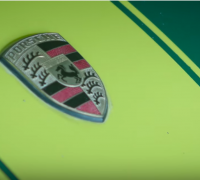At Restoration Design, we love cars. And while Porsches are our specialty, we also carry a number of parts for BMWs as well.
In this video, Adam shows you how to install the trunk floor on our 1972 BMW 2002 restoration project.
To start off, we did all of the preliminary work. We cut out the entire trunk panel which would be replaced, as well as the wheel wells. The channel connecting the two wheel wells is also a good idea to replace. The rear valence runs along the back of the trunk and down the sides, behind each tire, which we will also be replacing.
When installing the trunk floor, the first step is to put it in place and use C clamps to hold it in place. The trunk floor comes in a number of different parts, so make sure you have all of the parts you need before starting this part of the project.
To determine the height of the trunk floor, install the lock post. Once that’s in place, secure the trunk floor with self-tapping screws. Then you’ll want to install the valence.
The rear valence will go in place first. Not every car is the same, so you may have to cut the rear valence to make it the appropriate size for your specific car. The side valences can be tricky, so you may need to spot weld a couple of pieces of sheet metal to secure the side valences to.
Side valences come with necessary cutting and trimming, so you need to fit them and scribe them to the cut you have so you get a nice, neat, tight fit.
Before you put everything together, you need to prep the material and remove any paint from the edges you’ll need to weld.
When you’re satisfied with the placement of all the panels, put some weld-proof primer to prevent any rust from developing in the future.
To see the rest of the process and learn more about how to install the trunk floor on a BMW 2002, check out the video below.



